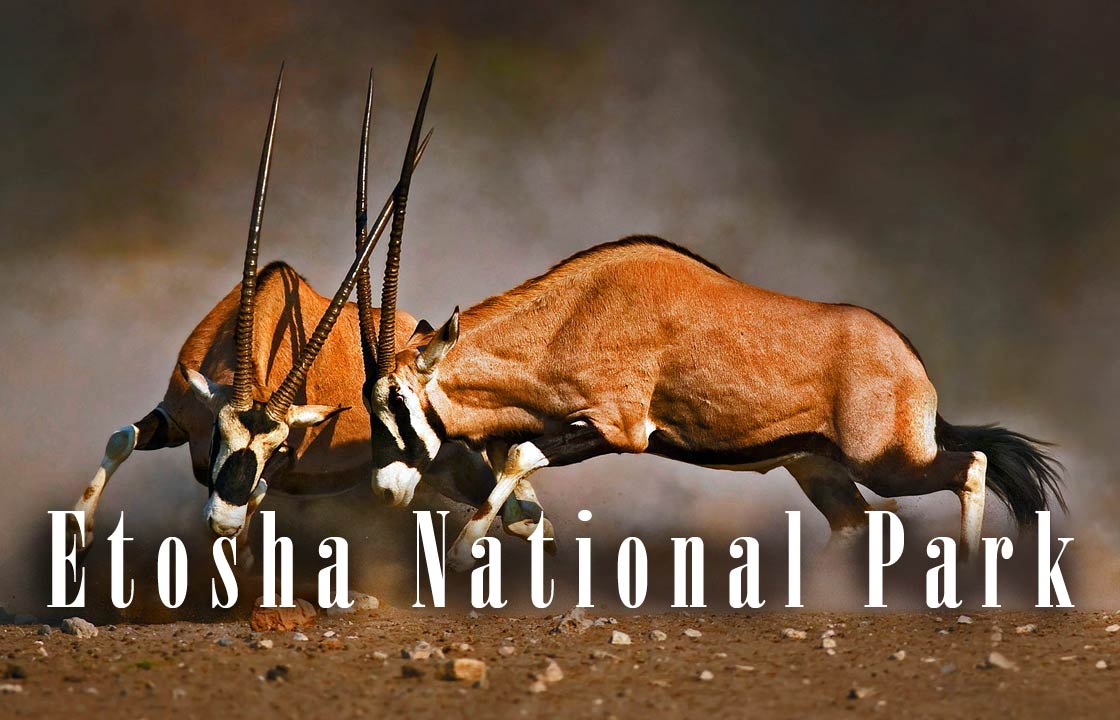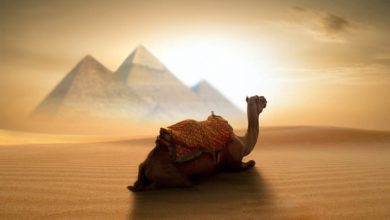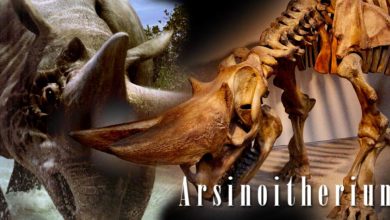Etosha National Park
Etosha National Park in Namibia is a breathtaking wilderness, teeming with life and offering a window into the raw beauty of Africa’s savannas. With its endless expanses of sun-baked grasslands, shimmering salt pans, and abundant wildlife, Etosha is a true gem of the African wilderness. Whether you’re a seasoned wildlife watcher or simply seeking a peaceful escape from the hustle and bustle of modern life, Etosha National Park is a place of wonder and awe, where you can reconnect with nature and bask in the raw beauty of the African wilderness.
Etosha National Park is a wildlife reserve in northern Namibia. It is known for its large salt pan, which covers about a quarter of the park’s area. The pan is a major draw for wildlife, including elephants, lions, giraffes, and a variety of antelopes. The park also has a number of waterholes, which attract even more animals during the dry season. Visitors can take game drives to see the wildlife, or stay overnight in one of the park’s camps or rest camps. The park is also home to a variety of birds and other animals, making it a popular destination for birdwatchers and nature enthusiasts.

Location
Etosha National Park is located in northern Namibia, in the Oshana, Oshikoto and Kunene regions. Specifically, it is located about 300 miles (500 km) north of the capital city Windhoek, and it is bordered by Angola to the north. The park covers an area of around 8,600 square miles (22,270 sq km). It can be accessed by car via the B1 main road, which runs through the park, or by taking a domestic flight to one of the nearby airports in towns such as Ongiva or Ondangwa.
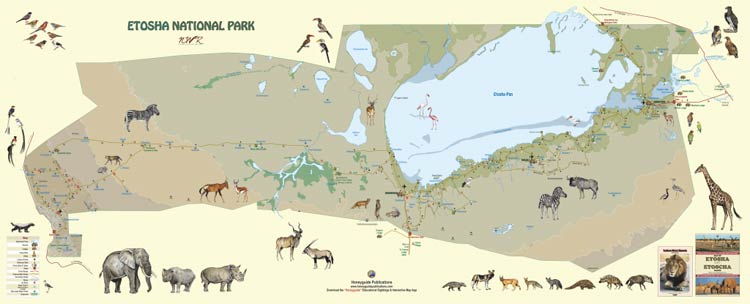
Basic Facts About Etosha National Park
Etosha National Park is a protected wildlife area located in northern Namibia. Here are some basic facts about the park:
- Area
The park covers an area of 22,270 km2 (8,600 sq mi) - Location
Etosha National Park is located in the Damaraland region of northwestern Namibia. - Establishment: The park was first established in 1907 as a game reserve, and was later officially designated as a national park in 1967.
- Wildlife
Over 114 mammal species can be found in the park, including elephants, lions, leopards, cheetahs, and giraffes. The park is also home to hundreds of bird species, as well as reptiles, insects, and other wildlife. - Etosha Pan
The park’s most distinctive feature is the Etosha Pan, a large, saline desert that covers a large area in the center of the park. - Climate
The park has a semi-arid climate, with warm temperatures and low rainfall. The best time to view wildlife in the park is during the dry season, when many animals congregate around the park’s waterholes. - Tourist attractions
Visitors to the park can enjoy wildlife viewing, stargazing, and learning about the night sky at the park’s astronomical observatory. The park is also home to the Himba people’s village, where visitors can learn about the traditional lifestyle of this indigenous group. - Accommodation
The park has several accommodation options, including camping sites, rest camps, and lodges.
Overall, Etosha National Park is a unique and fascinating wildlife area, offering visitors the opportunity to see a wide variety of wildlife and geological features in a beautiful and pristine natural setting.
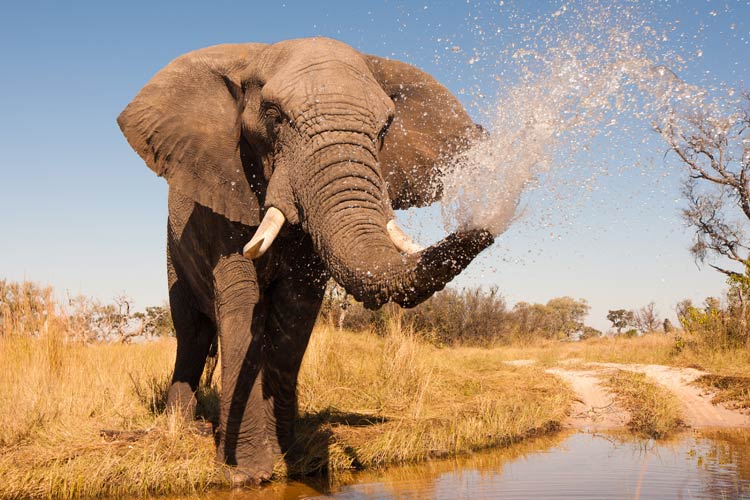
History and name of the Park
Etosha National Park has a long history dating back to the early 19th century, when the area was first explored by European settlers. The park was originally established as a game reserve in 1907 by the German colonial government, and was later designated as a national park in 1907. The name “Etosha” comes from the local Himba language, and means “great white place”, referring to the large salt pan that is a prominent feature of the park.
During the first half of the 20th century, the park was used for hunting by European settlers, and the population of many species of wildlife, including elephants and lions, was greatly reduced. In the 1960s and 1970s, the Namibian government implemented conservation measures and began to restock the park with animals. Today, Etosha National Park is considered one of the premier wildlife destinations in Africa, and is home to a wide variety of animals, including elephants, lions, giraffes, and many species of antelopes and birds.
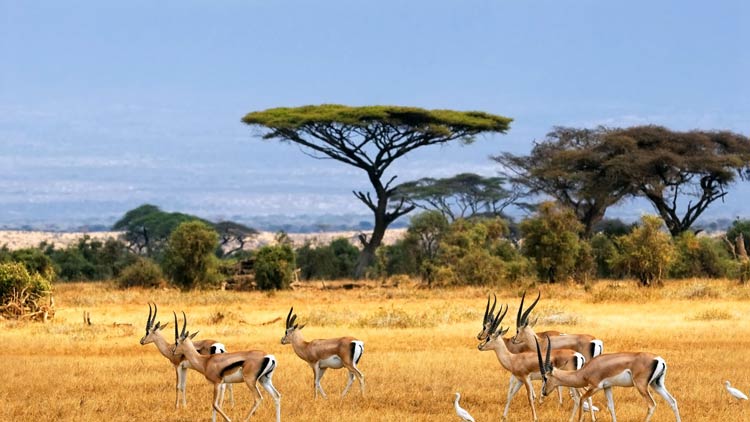
Geography
Etosha National Park covers an area of around 8,600 square miles (22,270 sq km) in northern Namibia. The park is characterized by its vast salt pan, which covers about a quarter of the park’s area. The pan is a shallow depression that fills with water during the rainy season, attracting a wide variety of animals, including flamingos and other water birds. The park also has a number of waterholes, which are critical sources of water for animals during the dry season.
The park is bordered by Angola to the north and is situated on a high plateau. The park’s terrain is primarily savannah grasslands with thorn bushes and occasional trees. The park has a number of different ecosystems, including savannah, woodland, and desert. The park also has a number of small hills and mountains, which provide scenic views and are home to a variety of wildlife.
The climate is semi-arid with a hot and dry climate characterized by two distinct seasons: the rainy season from January to April and the dry season from May to December. The temperatures can vary greatly between day and night, and the park can get quite hot during the day, especially during the dry season.
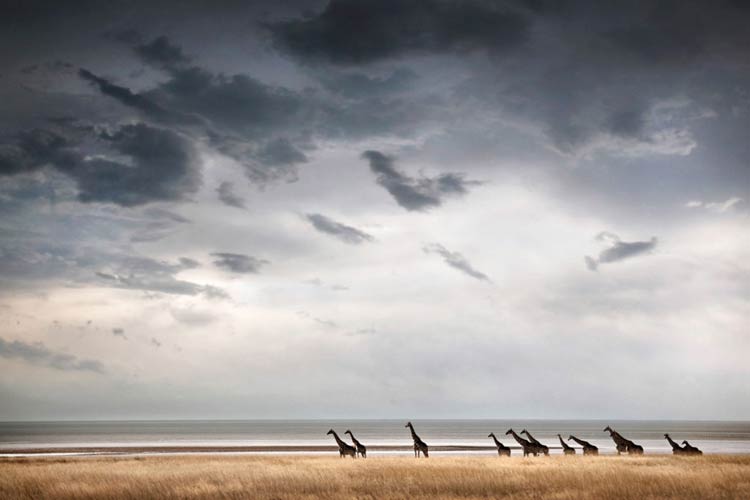
Etosha Pan
The Etosha Pan is a large salt pan located in the center of Etosha National Park in northern Namibia. It covers an area of around 1,853 square miles (4,800 square km) at an elevation of about 3,400 feet (1,036 m) and is one of the park’s most iconic features. The pan is a shallow depression that fills with water during the rainy season, attracting a wide variety of animals, including flamingos and other water birds. During the dry season, the pan is a vast expanse of cracked mud that is largely uninhabitable for most animals. It is one of the largest salt pans in the world and is a unique feature of the park.
The pan is thought to have been formed around 100,000 years ago as a result of tectonic activity. The pan is believed to have developed through tectonic plate activity over about ten million years. The pan is a major draw for wildlife, especially during the dry season, when many animals gather around the few remaining waterholes in the pan. The pan is also a popular spot for birdwatching, as it is home to a wide variety of waterbirds, including flamingos, pelicans, and storks.
The Etosha Pan is a seasonal wetland, it’s mostly dry throughout the year but can fill with water during the rainy season. The pan is an important habitat for a variety of bird species, including flamingos, pelicans, and stilts, as well as for a number of reptiles, such as crocodiles and lizards.
The pan can be accessed by visitors via several roads that lead to it, including the main road which runs through the park from east to west and offers views of the pan from several viewpoints. Visitors can also drive around the pan on designated tracks, which offer opportunities for game viewing and birdwatching.
The Etosha Pan is a major attraction in the park, it’s a unique feature of the park and it offers visitors the chance to see a wide variety of wildlife in their natural habitats. During the dry season, the pan attracts many animals to its waterholes, making it a prime spot for wildlife viewing. The pan also offers a unique landscape, and the contrast between the white of the pan and the green of the surrounding vegetation is striking.
The Etosha Pan is a unique and spectacular feature of the park, it is a must-see for visitors to Etosha National Park, and can be accessed by taking a game drive on the pan’s dike road.

Dolomite Hills
The Dolomite Hills are a range of hills located in the western part of Etosha National Park, in Namibia. They are formed from dolomite rock, which is a type of sedimentary rock that is composed mainly of calcium and magnesium carbonates. The hills are characterized by their rugged, rocky terrain and are home to a variety of plant and animal life.
The Dolomite Hills are an important habitat for a variety of wildlife species, including the black-faced impala, which is found only in this area of Etosha National Park. The hills are also home to a variety of bird species, including Monteiro’s hornbill and Bradfield’s hornbill.
The Dolomite Hills are not as visited as the pan, but they are considered a unique feature of the park. They can be accessed by taking a game drive on the park’s western roads, which offer visitors scenic views of the rugged terrain and a chance to spot some of the park’s rarest wildlife.
Dolomite Hills are important for the park, as they are an important source of water for the wildlife in the dry season. Additionally, the hills can offer visitors a different view and a different experience than the pan, they offer a more rugged and natural experience.
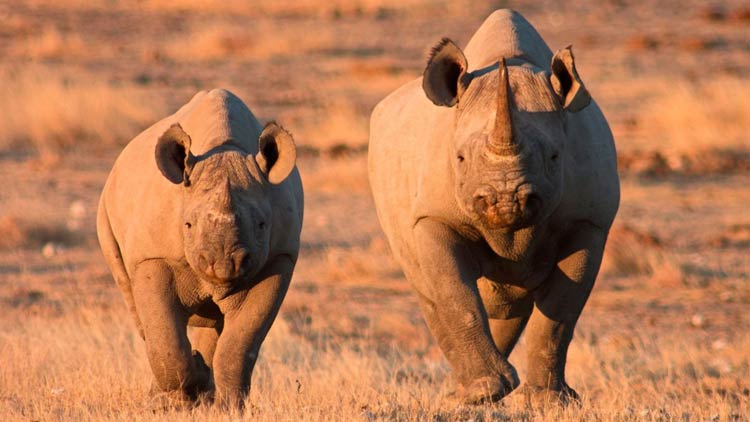
Savannah forests in Etosha National Park
Etosha National Park is home to several types of savannah forests, which are characterized by their open canopy and scattered trees. These forests are found in the eastern and southern parts of the park, and are an important habitat for a variety of wildlife species.
One of the main types of savannah forest found in the park is the mopane forest. Mopane trees are known for their distinctive butterfly-shaped leaves and their hard, durable wood. These trees can grow to be quite large and are an important source of food for elephants and other animals during the dry season.
Another type of savannah forest found in the park is the acacia forest, which is characterized by its dense thickets of thorny acacia trees. These forests are an important habitat for a variety of antelopes, including the kudu and the impala.
The savannah forests in Etosha National Park are also an important habitat for many bird species, including the white-crowned lapwing and the red-billed francolin. Visitors can see these forests by taking a game drive on the park’s eastern and southern roads, which offer visitors a chance to see a different type of habitat and wildlife than the pan or the hills.
In summary, the savannah forests of Etosha National Park offer a diverse range of habitats and support many different species of wildlife. They also provide a different experience for visitors, as they are more dense and leafy than the open savannah of the pan and the rugged terrain of the Dolomite Hills.
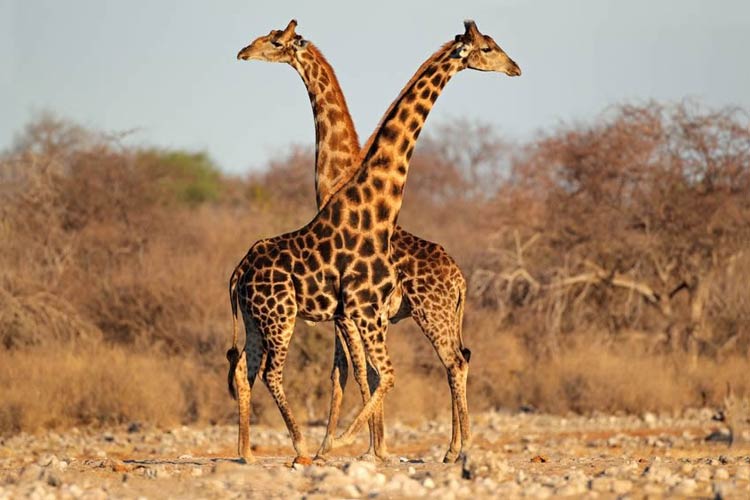
Savanna
A savanna is a type of grassland ecosystem characterized by scattered trees and a high diversity of grasses. Savannas are found in many parts of the world, including Africa, South America, and Australia. They are typically found in regions that have a moderate to the high amount of rainfall, and are characterized by a dry and wet season.
In Africa, savannas are known for their large herds of grazing animals, such as zebras, elephants, and giraffes, as well as for their big predators like lions and crocodiles. Savannas are also home to a diverse range of bird, reptile and insect species.
Etosha National Park, located in Namibia, has a large savanna ecosystem, it’s known for its vast grasslands, scattered trees, and a variety of animals. The savanna in the park supports a wide range of wildlife, including large herbivores like elephants, zebras, and giraffes, as well as predators like lions and cheetahs. The park also has a number of waterholes, which are critical sources of water for animals during the dry season.
Savannas are an important ecosystem and a major tourist attraction in many parts of the world. They offer visitors the opportunity to see a wide variety of wildlife in their natural habitats, as well as to enjoy the beauty of the grasslands and the scattered trees.
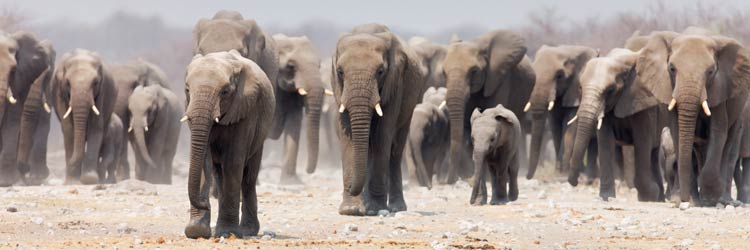
Geology of Etosha National Park
Etosha National Park in Namibia is located in a region with diverse geology and geological history. Here are some of the key geological features and aspects of the park:
- The park is located in the Damaraland region of northwestern Namibia, which is characterized by a complex geology with a mix of Precambrian metamorphic rocks and sedimentary rocks from the Phanerozoic era.
- The Etosha Pan, one of the park’s main features, is a large, saline desert that covers a large area in the center of the park. The pan is thought to have been formed from an ancient lake that dried up millions of years ago, leaving behind a large, flat, and highly saline landscape.
- The surrounding areas of the park are characterized by flat-topped hills, or inselbergs, which are formed from Precambrian granites and gneisses that have been exposed due to erosion.
- The park’s western region, known as the Andoni Plains, is characterized by flat, low-lying plains that are covered by gravel and sand, and are thought to have been formed by river deposits.
- The park’s eastern region is characterized by rocky hills and valleys, and is dominated by Precambrian metamorphic rocks and sedimentary rocks from the Phanerozoic era.
- There are also several geological features within the park that are of interest to geologists, including the Dolomite Hills, which are formed from dolomite rock and are an important site for geologic research.
Overall, the geology of Etosha National Park is diverse and complex, with a mix of Precambrian metamorphic rocks, sedimentary rocks from the Phanerozoic era, and flat-topped hills, inselbergs, and plains. These diverse geological features provide a unique and fascinating landscape for visitors to explore and appreciate.
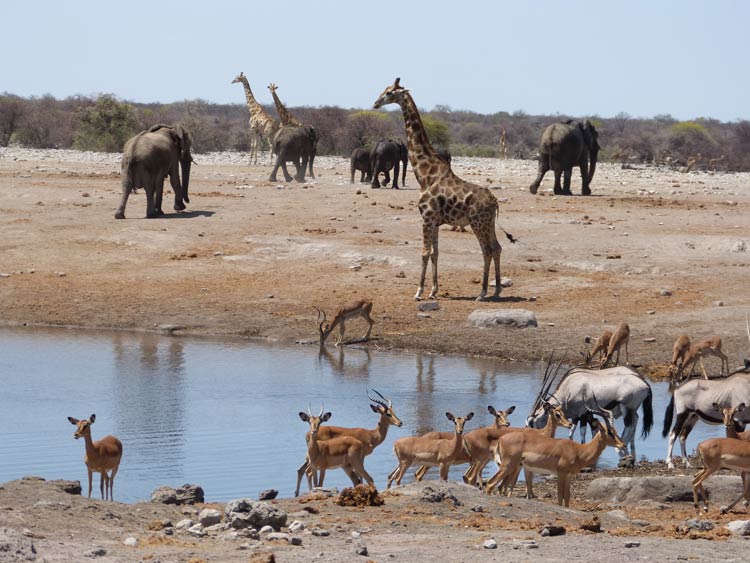
Waterholes in Etosha National Park
Waterholes are an essential part of the landscape in Etosha National Park in Namibia. These natural sources of water are a critical lifeline for the park’s abundant wildlife, providing much-needed hydration in an environment where water is often scarce. Visitors to the park are treated to a unique and memorable experience as they watch animals from all corners of the park gather at these waterholes to drink, bathe, and socialize.
Etosha National Park is home to over 100 waterholes, which vary in size and location, from large, permanent water sources to small, seasonal pools. Some of the park’s waterholes are easily accessible and within walking distance of roads, while others are more remote and require a longer hike to reach. Regardless of their location, each waterhole offers a unique and captivating glimpse into the lives of Etosha’s incredible wildlife, from elephants to antelopes, lions to zebras.
Visitors to Etosha National Park are encouraged to visit as many waterholes as possible during their stay, as each provides a unique experience and a chance to see different wildlife. Whether you’re observing majestic elephants quenching their thirst or watching a family of warthogs splashing in the water, the waterholes of Etosha National Park are a must-see for anyone visiting the park.

Climate
The climate of Etosha National Park in Namibia is semi-arid, characterized by hot summers and cool winters. The park experiences a dry season, which lasts from May to September, and a wet season, which lasts from December to April.
During the dry season, the park receives very little precipitation and the temperatures can be quite hot, with daytime temperatures reaching as high as 40°C (104℉). The dry season is also the best time to visit the park for game viewing as many animals congregate around the park’s waterholes.
During the wet season, the park receives more rainfall and the temperatures are cooler, with daytime temperatures typically around 25°C (77℉). The park can become quite lush and green during this time, and it’s also the best time to visit for birdwatching as many migratory birds arrive.
It’s important to note that the weather in the park can be unpredictable and it’s always recommended to check the forecast before visiting. Visitors should also be prepared for hot temperatures and bring sunscreen, hats, and plenty of water. The park can be closed during the rainy season due to floods or road conditions, so it’s always best to check before planning a trip.
The climate in Etosha National Park is semi-arid, with hot summers and cool winters, and a distinct dry and wet season. The park can be visited year-round, but the best time for game viewing is during the dry season, and the best time for birdwatching is during the wet season.
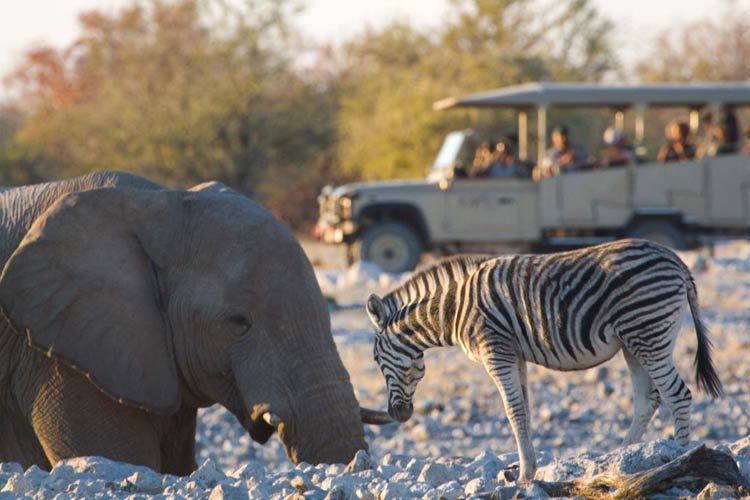
Flora in Etosha National Park
Etosha National Park in Namibia is home to a diverse range of flora, which varies depending on the different regions of the park. Some of the most notable types of vegetation found in the park include:
- Grasslands
The majority of the park is covered in grasslands, which are dominated by different types of grasses such as red grass, buffalo grass, and elephant grass. These grasses provide food for the park’s grazing animals and are an important part of the park’s ecosystem. - Shrubs
The park is home to a variety of shrubs, which are typically found in the park’s more arid regions. - Trees
The park is home to a variety of trees, which are typically found along the park’s watercourses, such as rivers and pans. These trees include species such as the Mopane, which is a type of tree that is found in the park’s eastern regions. - Acacia Trees
The park is also home to a variety of acacia trees, which are typically found in the park’s more arid regions. These trees provide food and shelter for many of the park’s grazing animals. - Aloe Trees
The park is also home to a variety of aloe trees, which are typically found in the park’s more arid regions. These trees are characterized by their thick, fleshy leaves that store water and are typically found in the park’s southern regions. - Other trees like Terminalia sericea and Commiphora species are also found in the park
Etosha National Park is home to a diverse range of flora, which includes grasslands, shrubs, trees, and other plants. The park’s flora is an important part of the park’s ecosystem, providing food and shelter for many of the park’s animals and helping to support the park’s overall biodiversity.
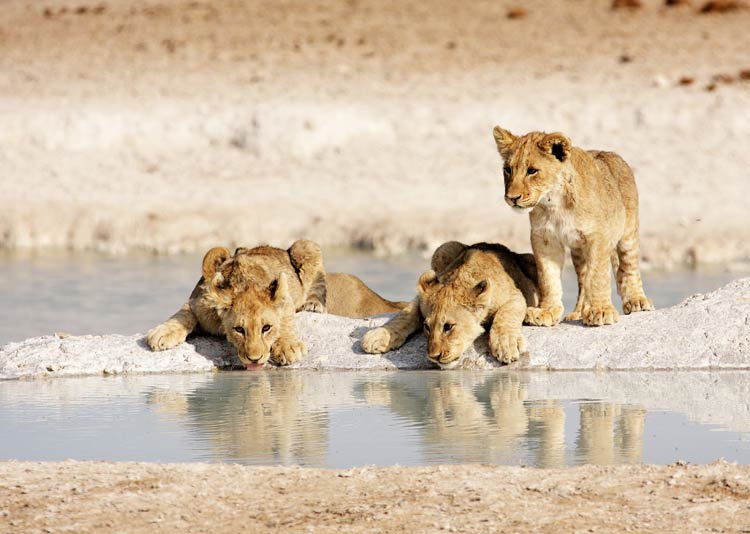
Fauna in Etosha National Park
Etosha National Park in Namibia is home to a diverse range of wildlife, including many species of mammals, birds, reptiles, and insects. Some of the most notable animals found in the park include:
- Big Cats
The park is home to several big cats, including lions, leopards, and cheetahs. Visitors can often spot them at the park’s waterholes, particularly during the dry season. - Elephants
The park is home to a healthy population of elephants, which can often be seen in large herds roaming the grasslands. - Giraffes
The park is home to a large population of giraffes, which can often be seen grazing on the tall grasses. - Zebras
The park is home to several herds of zebras, which can often be seen grazing on the grasslands. - Black Rhinoceros
The park is home to a healthy population of black rhinos, which are considered to be one of the most endangered species in the world. - Springbok
The park is home to large herds of springbok, which can often be seen grazing on the grasslands. - Oryx
The park is home to a healthy population of oryx, which are a type of antelope. - Kudu
The park is home to a healthy population of kudu, which is a type of antelope. - Birds
The park is home to a wide variety of bird species, including flamingos, pelicans, stilts, and many more. - Reptiles
The park is home to a wide variety of reptiles, including crocodiles, lizards, and snakes.
Etosha National Park is home to a diverse range of wildlife, including many species of mammals, birds, reptiles, and insects. The park offers visitors the opportunity to see a wide variety of wildlife in their natural habitats, as well as to enjoy the beauty of the grasslands and the scattered trees.
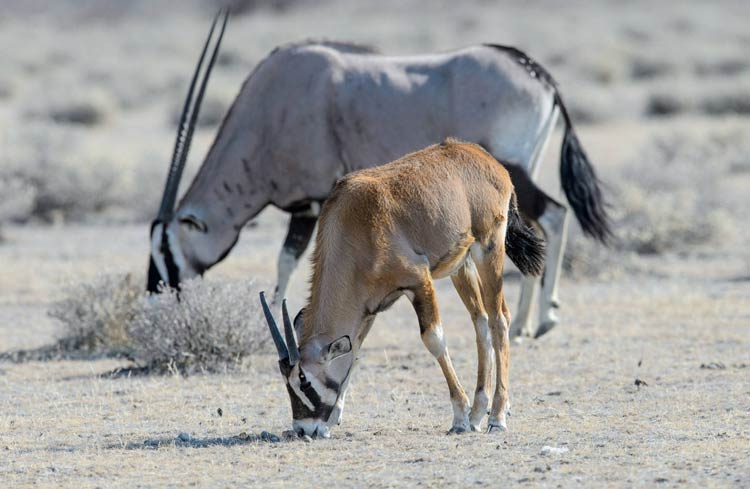
Tourism and tourist attractions in the park
Etosha National Park in Namibia is a popular tourist destination and offers a wide range of activities and attractions for visitors. Some of the most popular tourist activities and attractions in the park include:
- Game viewing
One of the main draws of the park is the opportunity to see a wide variety of wildlife in their natural habitats. Visitors can drive through the park in their own vehicles or take guided game drives to see animals such as elephants, lions, leopards, cheetahs, and giraffes. - Bird watching
The park is home to a wide variety of bird species, and bird watching is a popular activity for visitors. Some of the most notable bird species found in the park include flamingos, pelicans, stilts, and many more. - Visiting the Etosha Pan
The Etosha Pan is a large, saline desert that covers a large area in the center of the park. The pan is an important feature of the park and is a popular spot for visitors to see wildlife and to take in the park’s unique landscapes. - Camping and picnicking
The park offers several designated camping and picnicking areas, where visitors can spend the night or enjoy a picnic lunch. - Nature walks
The park offers a number of nature walks, which are guided by park rangers and provide visitors with an opportunity to learn more about the park’s flora and fauna. - Visiting the park’s waterholes
The park is home to several waterholes, which are popular spots for visitors to see wildlife. Many animals, including elephants, lions, and giraffes, can be seen at the waterholes, particularly during the dry season. - Visiting the park’s lookout points
The park is home to several lookout points, which offer visitors stunning views of the park’s landscapes and wildlife. - Cultural tours
The park also offers cultural tours, which allow visitors to learn about the Himba people, an indigenous group that has lived in the area for centuries.
Etosha National Park offers a wide range of activities and attractions for visitors, including game viewing, bird watching, visiting the Etosha Pan, camping and picnicking, nature walks, and visiting the park’s waterholes and lookout points. The park’s unique landscapes and diverse wildlife make it a popular tourist destination for visitors from around the world.
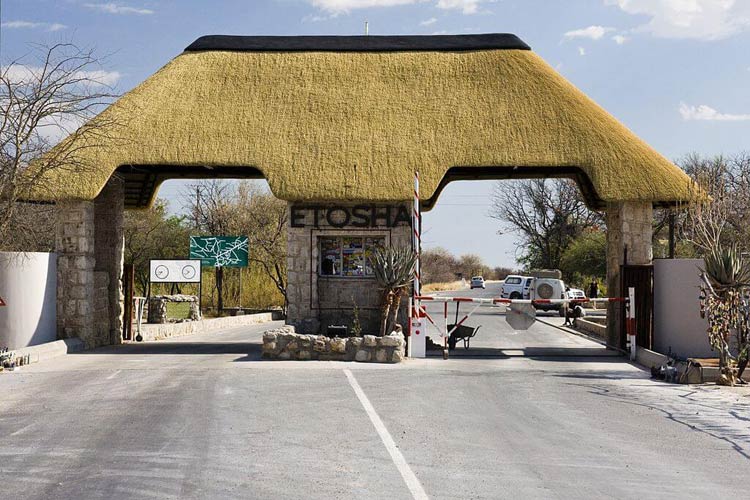
How To Reach To Etosha National Park?
Etosha National Park is located in northern Namibia, and can be reached by several means of transportation:
- By road
The park can be reached by road from several major cities in Namibia, including Windhoek, the capital city, and Oshakati. From Windhoek, the drive to the park takes approximately 6 hours. From Oshakati, the drive takes approximately 2 hours. - By air
Visitors can fly into the nearest airports, which are in Oshakati and Otjiwarongo. From there, they can rent a car or take a shuttle to the park. - By bus
Visitors can take a bus to the nearest town, Oshakati, and then take a shuttle or rent a car to the park.
Once you arrive at the park, you will need to purchase a park entry permit, which is required for all visitors. There are several accommodation options available within the park, including rest camps, lodges, and camping sites, so visitors can choose the option that best suits their needs and budget.
Reaching Etosha National Park is relatively straightforward and convenient, with several transportation options available to visitors. With its unique and diverse wildlife, stunning scenery, and rich cultural heritage, the park is well worth a visit for anyone traveling to Namibia.
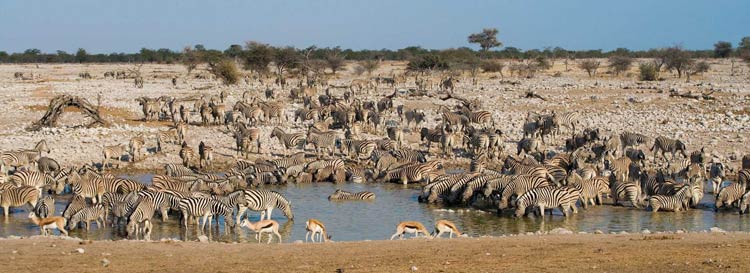
Best Time To Visit Etosha National Park
The best time to visit Etosha National Park in Namibia depends on a number of factors, including the weather, wildlife viewing opportunities, and personal preferences. Here are a few things to keep in mind when planning your visit:
- Weather
The park experiences a semi-arid climate, with hot, dry summers and cool, dry winters. The best time to visit the park weather-wise is during the winter months (May to October), when temperatures are cooler and more pleasant. - Wildlife viewing
The best time for wildlife viewing is during the dry season (May to October), when water is scarce and animals gather at the park’s numerous waterholes, making them easier to spot. This is also the time when many young animals are born, adding to the park’s abundant wildlife. - Bird watching
The best time for bird watching is during the wet season (November to April), when many migratory birds arrive in the park, providing a spectacular display of feathery beauty. - Personal preferences
If you prefer a more peaceful and less crowded experience, consider visiting the park during the off-season (April to September), when fewer tourists are in the park. If you enjoy interacting with other visitors and sharing your experiences, consider visiting during the peak season (October to March).
The best time to visit Etosha National Park is subjective and depends on individual preferences and interests. The park is open year-round and offers a unique and thrilling experience no matter when you visit.
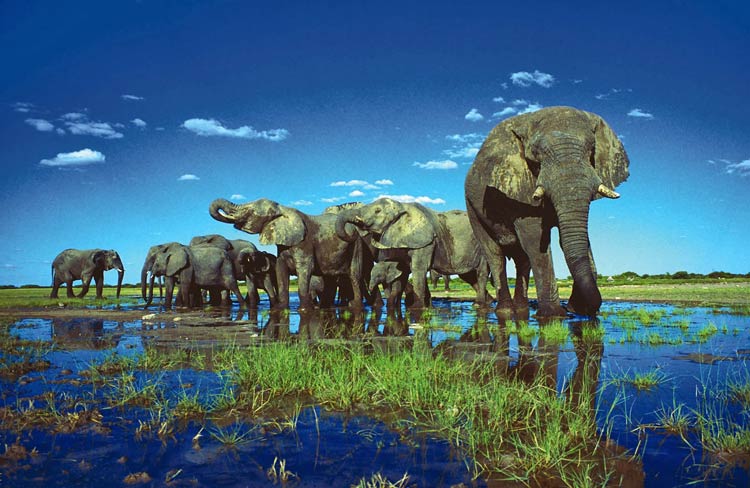
Conservation
Conservation is an important aspect of Etosha National Park in Namibia. The park was established in 1907 with the goal of preserving the area’s unique and diverse wildlife and habitats, and has since become one of the country’s most popular tourist destinations. To ensure the park remains a thriving and vibrant ecosystem for generations to come, various conservation measures have been put in place, including:
- Anti-poaching measures
The park has strict laws against poaching, and rangers work to enforce these laws and protect the park’s wildlife from poachers. - Habitat preservation
Efforts are made to maintain and restore the park’s habitats, including savannas, forests, and wetlands, to ensure they are healthy and able to support the park’s diverse wildlife. - Research and monitoring
Researchers and biologists work to monitor and study the park’s wildlife and habitats, providing valuable information that can be used to inform conservation decisions and protect the park’s resources. - Eco-tourism
The park’s popularity as a tourist destination provides an important source of revenue that can be used to support conservation efforts, and park managers work to minimize the impact of tourism on the park’s resources. - Community outreach
The park partners with local communities to educate them about the importance of conservation and engage them in conservation efforts, helping to build support for the park and its resources.
The conservation of Etosha National Park is a top priority, and various measures are in place to ensure the park’s unique and diverse wildlife and habitats are protected for future generations.

Etosha National Park in numbers
Here are some numbers that summarize some key aspects of Etosha National Park in Namibia:
- Area: 22,270 km2 (8,600 sq mi)
- Established: 1907 (as a game reserve); 1967 (as a national park)
- Wildlife species: 114 mammal species, including elephants, lions, leopards, cheetahs, giraffes, and many others.
- Bird species: Over 340 bird species can be found in the park, including flamingos, storks, vultures, and eagles.
- Tourist visits: Approximately 200,000 (in 2010)
- Accommodation options: 5 rest camps, several lodges, and numerous camping sites.
- Waterholes: Approximately 100 waterholes, which provide critical water sources for wildlife in the park.
- Geographical features: Flat-topped hills, rocky hills, valleys, plains, and the Etosha Pan, a large, saline desert in the center of the park.
These numbers give a glimpse into the size and diversity of Etosha National Park, which is one of the largest and most important protected areas in southern Africa. With its diverse wildlife and geological features, the park provides a unique and exciting opportunity for visitors to experience the beauty and wonder of the African wilderness.
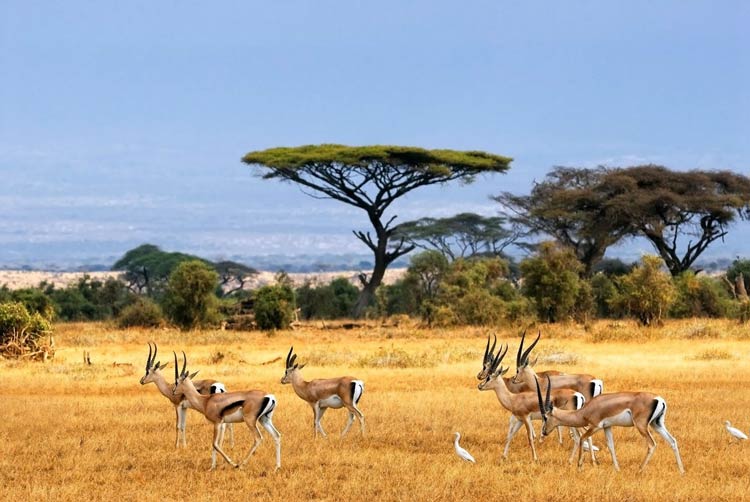
Interesting facts about Etosha National Park
Etosha National Park in Namibia is a unique and fascinating destination with a rich history and many interesting facts. Here are a few interesting facts about the park:
- The park was first established in 1907 as a game reserve, and was later expanded and officially designated as a national park in 1967.
- The park is named after the Etosha Pan, a large, saline desert that covers a large area in the center of the park. The pan is one of the main features of the park and is an important spot for wildlife viewing.
- The park is home to over 114 mammal species, 340 bird species, 110 reptile species, 16 amphibian species, and over 1,000 plant species.
- The park is home to several large mammal species, including elephants, lions, leopards, cheetahs, and giraffes, as well as many other smaller mammal species.
- The park is also home to a wide variety of bird species, including flamingos, pelicans, stilts, and many more.
- The park’s Etosha Pan is a unique and important feature of the park. The pan is a large, saline desert that covers a large area in the center of the park and is an important spot for wildlife viewing.
- The park’s wildlife can be best viewed during the dry season, when many animals congregate around the park’s waterholes.
- The park also has an astronomical observatory, which is located in the Andoni Plains in the western part of the park, and offers visitors an opportunity to stargaze and learn about the night sky.
- The Himba people, an indigenous group that has lived in the area for centuries, are still present in the park and visitors can visit their village for a glimpse of their traditional lifestyle.
- The park is also home to the endangered Black Rhino and its conservation is a priority for the park management.
Etosha National Park is a unique and fascinating destination with a rich history and many interesting facts. Its diverse wildlife, unique landscapes, and cultural heritage make it an important tourist destination for visitors from around the world.
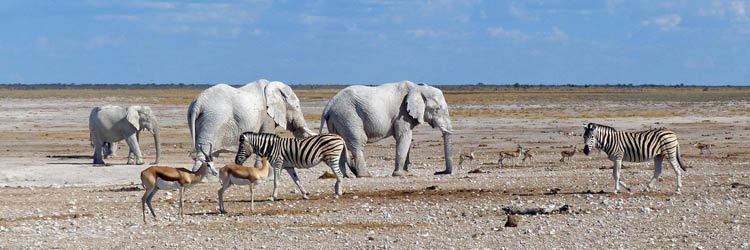
Q&A (questions and answers) about Etosha National Park
Q: What is the name of the large, saline desert in Etosha National Park?
A: The Etosha Pan.
Q: When was Etosha National Park first established?
A: 1907 as a game reserve, later in 1967 it was officially designated as a national park
Q: How many mammal species are in the park?
A: Over 114 mammal species
Q: What are some large mammal species that can be found in the park?
A: Elephants, lions, leopards, cheetahs, and giraffes
Q: When is the best time to view wildlife in the park?
A: During the dry season, when many animals congregate around the park’s waterholes.
Q: What other activities can visitors do at Etosha National Park?
A: Visitors can stargaze and learn about the night sky at the park’s astronomical observatory, visit the Himba people’s village for a glimpse of their traditional lifestyle and also the park is home to the endangered Black Rhino, its conservation is a priority for the park management.
Q: Are there any accommodation facilities within the park?
A: Yes, the park has several accommodation options, including camping sites, rest camps, and lodges.
Q: What is the total area of the park?
A: The park covers an area of 22,270 km2 (8,600 sq mi)


